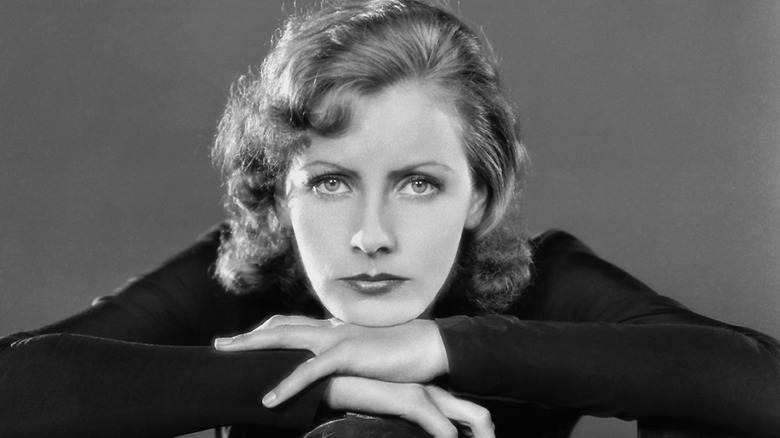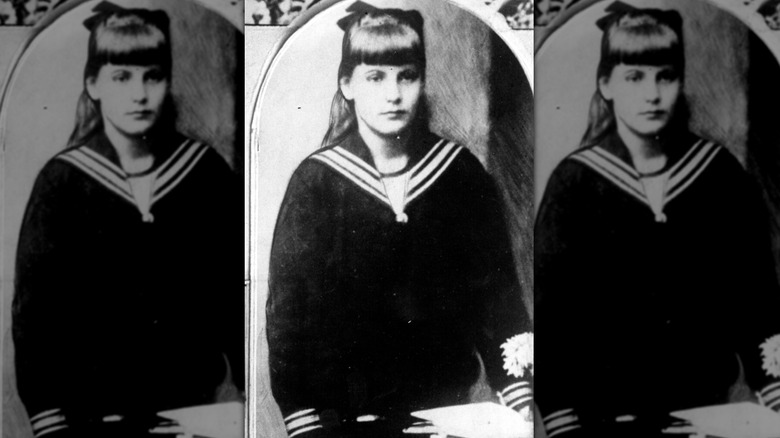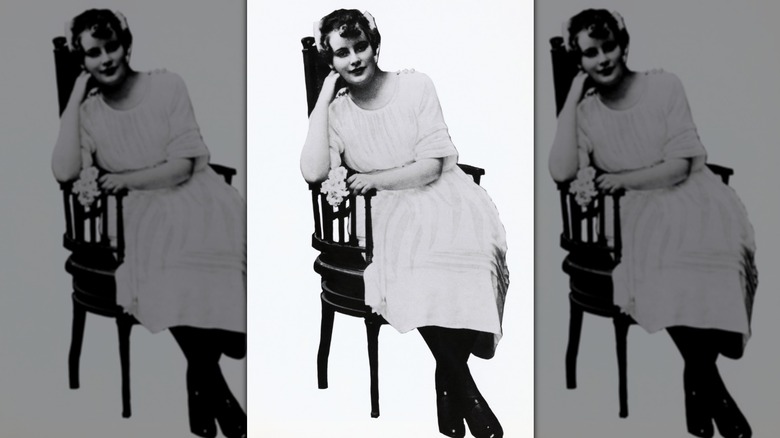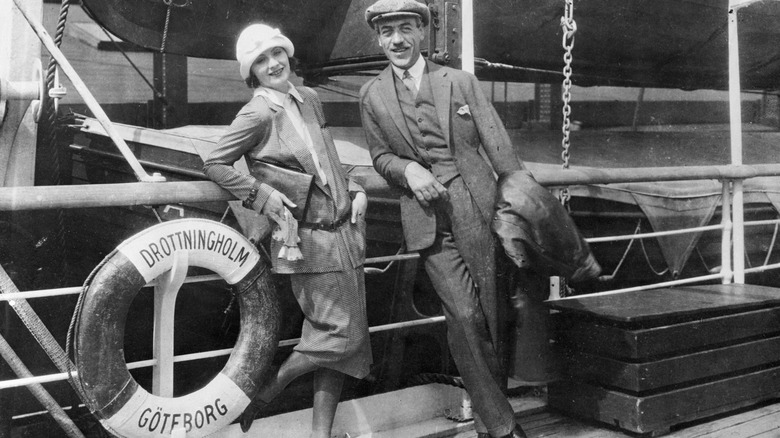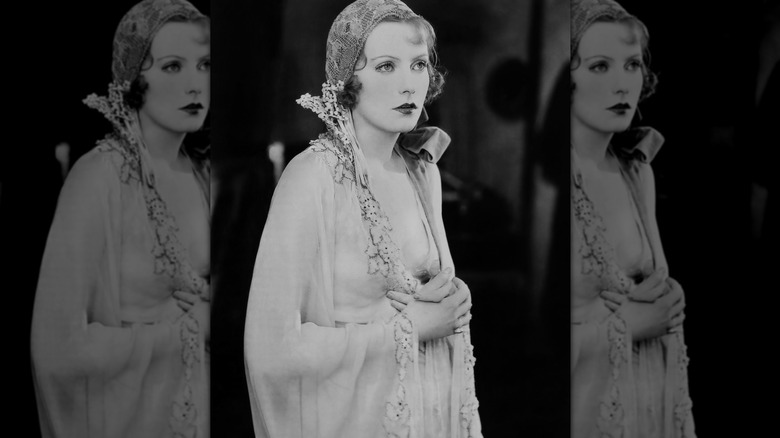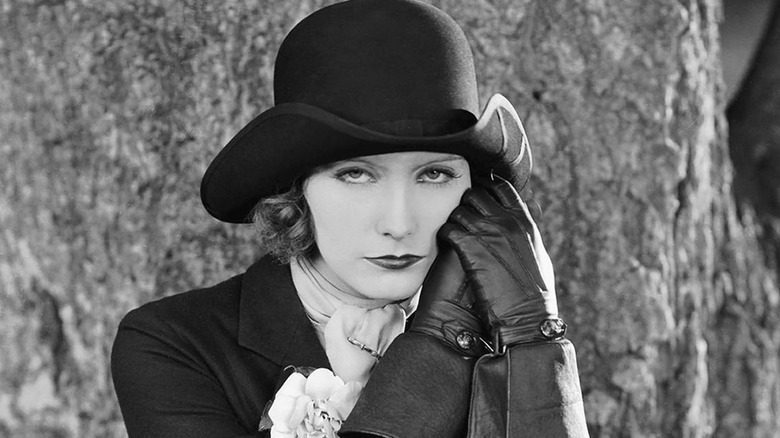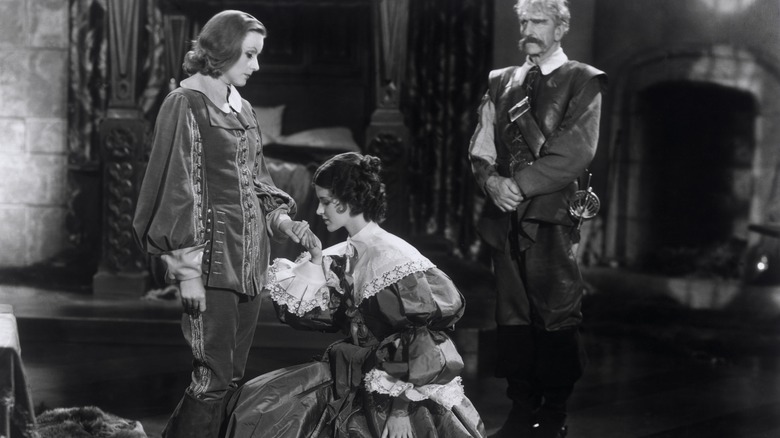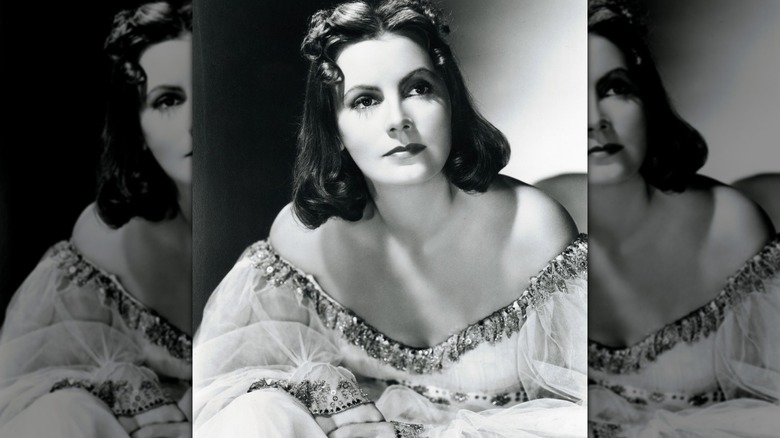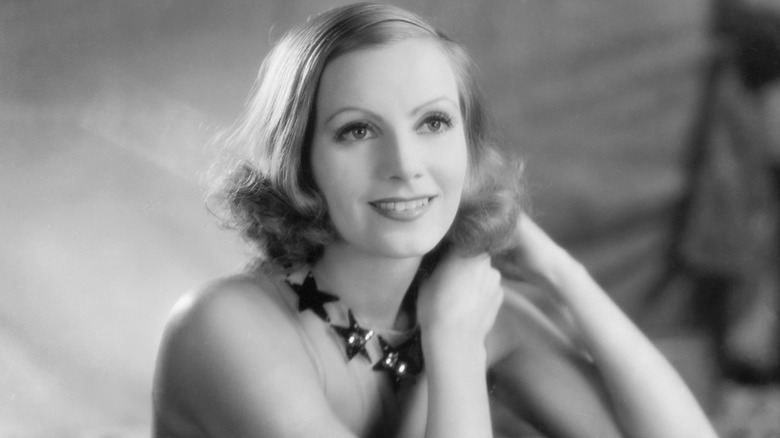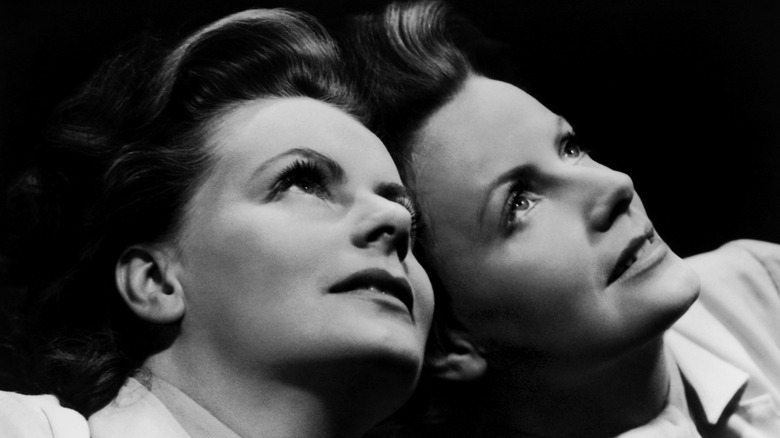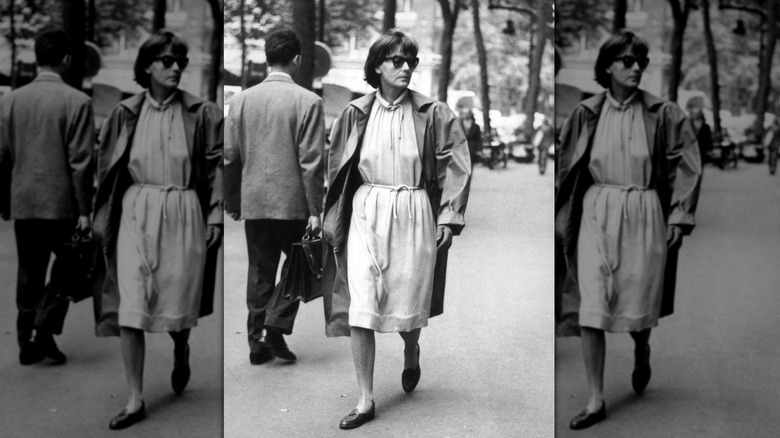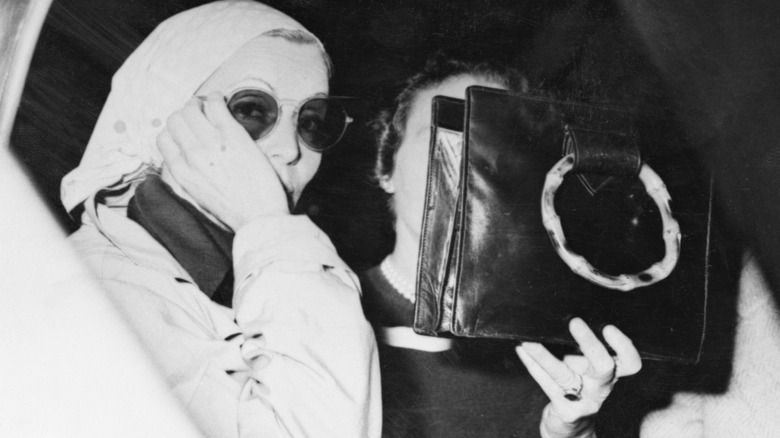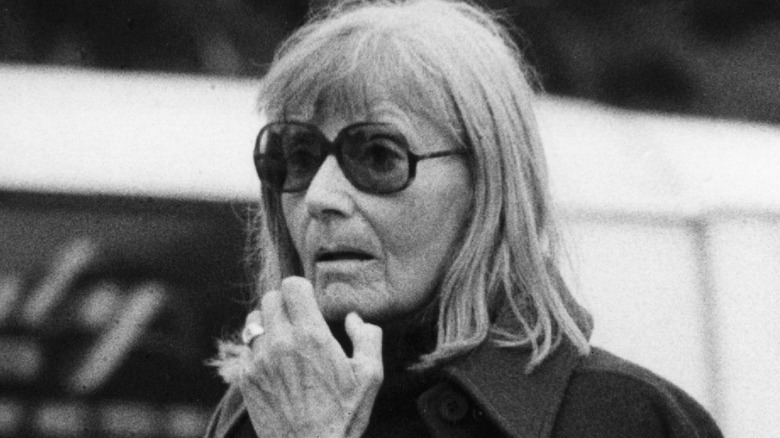Tragic Details About Greta Garbo's Life
There was one "It Girl" during the Golden Age of Hollywood who stood out among the rest: Greta Garbo. Known for her striking beauty, iconic Old Hollywood hairstyles, and mesmerizing talent on screen, the Swedish-born actress was discovered by MGM's Louis B. Mayer in Berlin and was brought to America in the 1920s. Garbo found immediate success in silent films because of her ability to encapture an audience and display intense emotions through her close-up shots. With her attractive Swedish accent, early 20th-century beauty and glamour, as well as her piercing eyes, Garbo has remained a mystery to those captivated by her.
Although her career only lasted 19 years, following her retirement at 36, Garbo's appearances in 27 movies left her with a lifetime of success. Seemingly an idyllic movie star, Garbo's life was actually struck by many unfortunate events causing her to struggle through her years in the spotlight, from being raised in immense poverty to losing many of her loved ones in the early days of her career.
So, what happened that led Greta Garbo to abandon a successful acting career and live the majority of her life in solitude? Ahead are the tragic details that affected the life of one of the most well-known and lucrative actresses from the 1920s and '30s.
Greta Garbo grew up in poverty in Sweden
Unlike the Old Hollywood elite most have come to know her by, Greta Garbo grew up in poverty. Garbo was born on September 18, 1905, to her parents, Karl Alfred and Anna Lovisa Gustafsson, in one of the poorest areas of Stockholm, Sweden. Garbo was the youngest of three children, and they all lived in a confined apartment with no indoor plumbing. Her parents were hard workers from rural and impoverished backgrounds with her father in and out of work as an unskilled laborer.
"She was looked on as a unique phenomenon, a sphinx, a myth, the most beautiful woman in the world," wrote Robert Gottlieb in the biography, "Garbo." "But in reality, she was a Swedish peasant girl, uneducated, naïve, and always on her guard." Although she was able to rise above her unfortunate adversity, Garbo's background of growing up with little to nothing shaped who she ultimately was.
Her father died when she was 14 years old
Greta Garbo's father, Karl Alfred, died from kidney disease when the actress was 14 years old. Prior to his death, Garbo had to drop out of school to take care of Alfred, often escorting him to non-profit hospitals for his treatments. For Garbo, the loss of her father not only meant the loss of a loved one but it also meant she had to find a job to supplement the income for her family to make ends meet.
According to an old article from Variety, Garbo took up a position as a "lather girl in a Swedish barber shop" and then worked in a department store selling and modeling hats. As noted in The New Yorker, Garbo once said that she was "always sad as a child for as long as I can think back. ... I did some skating and played with snowballs, but most of all I wanted to be alone with myself."
Between growing up in dismal conditions and losing her father, Garbo matured quickly and was thrown into the working world without her completed education.
She changed her last name and accent to appeal to audiences
After joining Stockholm's Royal Dramatic Theatre at 17, Garbo met Mauritz Stiller, a film director, who was looking for actresses to cast in his film, "The Story of Gösta Berling." Stiller held an important role at the start of Garbo's film career and was the person to suggest she change her birth name from Greta Lovisa Gustafsson to Greta Garbo.
In her 1985 paper titled "Greta Garbo: Sailing Beyond the Frame" published by The University of Chicago, Betsy Erkkila noted that the name change was the beginning of Garbo masking her identity for film executives, and thus, taking away her power.
MGM's Louis B. Mayer brought her and Stiller to America in 1925, however, the young Swedish actress was unable to speak English. Despite not being an anglophone, Mayer made her the next big star of Hollywood. According to Variety, another studio head at MGM had Garbo "learn English, lose weight, straighten her hair, and get her teeth fixed." At the beginning of her career, silent films still dominated the industry which protected Garbo from speaking English and concealed her Swedish accent. By the time she got settled in her new home, most of her Swedish identity was hidden.
After a year of living in America, her sister died
Tragedy seemed to follow Greta Garbo. Within a year of living in the U.S., her sister died back in Sweden. In an interview with Photoplay in 1928, Garbo told the publication, "My sister — she has died since I came to this country — I cannot believe it until I return to my home and find — she is not there to greet me."
While Garbo was on a one-way train to stardom, her personal life was crumbling to bits and pieces. She was trying to adjust to American life alongside her friend and mentor, Mauritz Stiller, after starring in MGM's pictures "Torrent" and "The Temptress" in 1926 which brought her and the studio massive success. However, tragedy struck again. Stiller didn't have as much success in Hollywood and moved back to Sweden in 1928 where he died the same year.
In a letter Garbo wrote to a friend back in Sweden, she exclaimed, "This ugly, ugly America, all machine, it is excruciating" (via The New Yorker). Now without the support of her friend Stiller who made the journey to America with her, and without her sister back in Sweden, Garbo had to keep moving forward as the spotlight wasn't leaving her side.
Garbo struggled to keep her privacy as she became a Hollywood star
Unlike the alluring and sensual facade she portrayed in films, Greta Garbo was quite the opposite in real life. This is why she received the nickname "The Swedish Sphinx." She titillated audiences with her mysterious eyes that had a depth of emotion and also somehow drew her fans in even more because of her desire to keep a very private life.
After the success of her first films with MGM in 1926, Garbo became very picky to whom she gave interviews. In a story by Variety in 1929, they wrote, "Practically nothing has ever been known personally about Miss Garbo, she being a publicity-shunner and the toughest of all stars to interview."
Garbo didn't merely request privacy from her adoring fans, she also wanted it on set. During the filming of "Queen Christina" in 1933, Garbo wanted director Rouben Mamoulian to leave during the intimate scene. Mamoulian recalled that Garbo explained, "During these scenes, I allow only the cameraman and lighting man on the set. The director goes out for a coffee or a milkshake" (via The New York Times). Garbo lost that battle, and Mamoulian stayed on set for the scene. Ultimately, she could never win by trying to conceal her personal life from Hollywood because it made people want to know her even more.
Greta Garbo's sexuality has long been questioned
Greta Garbo was one of the most publicized celebrities during her Hollywood career, and with that came many rumors of her romantic relationships. She became well-known for her romance with actor John Gilbert, with whom she co-starred in a handful of movies, including "Flesh and the Devil" and "Queen Christina." There were reports of an engagement between the pair and they allegedly planned a wedding, however, the bride never showed up to the ceremony.
Many of her movies with intimate scenes also fueled rumors regarding whom she was in a relationship with, but Garbo never committed to anyone. Of course, most celebrities aren't safe from fans wanting to know who they're dating, but Garbo was constantly questioned about her sexuality in tabloids as well. It's suspected Garbo was in a relationship with Mercedes de Acosta, a screenwriter and playwright, whom Garbo met while making the movie "Susan Lenox: Her Fall and Rise." In the biography "Garbo," Robert Gottlieb mentioned that Garbo's closet contained men's clothing, leading many to suspect that some of her films, particularly "Queen Christina," which features scenes of her kissing another woman and wearing men's clothing, may have had queer undertones.
Garbo seemed to be disgruntled by the constant rumors of who she could be dating — whether a woman or a man. In a collection of archived letters, Garbo wrote in 1934, "On top of all the other absurdities, they're marrying me for the 759th time" (via Smithsonian Magazine).
Garbo was suspected to be a spy during WWII
While audiences saw Greta Garbo play a Russian spy in the movie "The Mysterious Lady" and a World War I spy in "Mata Hari," the notion of her actually being a spy is hard to believe. However, her popularity dimmed during WWII because she didn't raise money for the Allied war effort, unlike many Hollywood actors, writers, directors, and filmmakers who showed their unwavering support.
Ironically, there was a double agent for the British, Juan Pujol Garcia, who went by the nickname of "Agent Garbo," named after the famed actress for her mystifying nature. This may have caused some confusion leading people to suspect she was a spy. In addition to that, in the book, "A Man Called Intrepid: The Secret War," writer William Stevenson documented that Greta Garbo "helped Britain by identifying high-level Nazi sympathizers in Stockholm and by providing introductions and carrying messages for British agents."
She fought to earn better wages in Hollywood
Throughout Greta Garbo's career, she was a trailblazer for renegotiating higher salaries. In a battle to secure a profitable income, she stood her ground and demanded a rate that reflected the success she had brought to MGM. She threatened to strike and return to her native country if MGM execs refused to increase her wages, and as a result, Garbo settled on a salary 14 times her starting rate, from $350 to $5,000 a week. Eventually, the Swedish actress was bringing in $270,000 a picture. Greta Garbo was one of the highest-paid actresses for MGM in 1928, and that was all due to her convincing the studio she was worth it.
It was a feat in itself that Garbo found immediate success from her first two silent films with MGM, and then becoming a fan favorite in the silent film industry. Moreover, Garbo proved to be a continued success when the studio allowed her to do a talkie, despite her Swedish accent. Her first talking movie was "Anna Christie" in 1930 for which she was nominated for an Oscar for Best Actress. With that much success, it makes sense why she would fight tooth and nail to be paid more for her work.
Her career came to an abrupt end after 19 years on the screen
When World War II began, Greta Garbo's career took a hit. It was a mix of bad circumstances and a movie flop that led her to disappear from the limelight. MGM tried to revive her career in 1939 with the film "Ninotchka," which was her first comedy and earned her another Oscar nomination. However, her second comedy, ”Two-Faced Woman” in 1941, didn't sit well with audiences and became her last film altogether. With the war underway, Garbo's European audiences couldn't supplement the income that they had brought to her previously. Garbo tried to negotiate her salary after "Two-Faced Woman" but the studio declined.
Many women in Hollywood were hit hard by the war, as films started to center around men instead of women, even the prominent leading ladies, Garbo alike. As quickly as she rose to stardom, she swiftly disappeared and declined any subsequent roles offered to her. When Garbo was asked by actor David Niven why she wouldn't return to the screen, she responded "I had made enough faces" (via The Guardian).
Greta Garbo became more of a mystery after her retirement
For Greta Garbo, the more she retreated into her shell to live a recluse life, the more people were fascinated by her. After her early retirement from Hollywood at age 36, she moved to New York City to take a step back from the lights, cameras, and action, that had consumed the first part of her life. Garbo called herself ”a wanderer" and did just that in her retirement years. She became relatable post-Hollywood and enjoyed leisurely walking around her New York City neighborhood while completing mundane tasks, such as doing groceries and antique shopping.
Although she attempted to slip into a normal routine, the world never forgot her. Fans would gawk at her through the New York City streets and follow her just to be in her presence. Other times, she would capture the attention of photographers coincidentally, not because of her fame but for her enigmatic aura.
In the 1930s, Variety referred to her fans as "Garbo maniacs" and thus, "Garbo-watching" became a pastime for people in Manhattan who were able to spot her. This was the opposite of what the legendary movie-maker wanted. In a collection of letters between Garbo and her friend, the Swedish Countess Märta Wachtmeister, she wrote, "I am almost always alone and talk to myself. I drive to the beach and take walks and that's always marvellous. But that's it ..." (via Sotheby's).
An X-rated film used unauthorized footage of Greta Garbo
Although "Two-Faced Woman" is technically the last film that Greta Garbo appeared in, unbeknownst to her, she also appeared on screen after her retirement. She was known for walking the streets of Manhattan to the point where fans waited for and expected her.
Unauthorized footage from her famous walks around her neighborhood was used in the 1974 pornographic film "Adam and Yves." While it's not clear if Garbo ever knew she was featured in this film, the usage violates the privacy she was trying to uphold.
After the movie "Camille" was released in 1936, Garbo was surrounded by fans in an overwhelming capacity and wrote to her friend Salka Viertel saying, "I guess I can't complain because after all, I'm only a circus lady" (via The Washington Post). Unfortunately, her privacy and boundaries were often ignored and overlooked by fans and the general public.
She died in 1990 at age 84
Greta Garbo died on April 15, 1990, at 84 years old in Manhattan's New York Hospital. As documented in a Los Angeles Times article from 1990, Garbo had died from heart and kidney failure and, prior to the death, had been receiving dialysis treatment three times a week at New York Hospital's Rogosin Institute.
In the movie "Grand Hotel," Garbo famously said "I want to be alone" which she later clarified she had said "I want to be let alone," encapsulating some aspects of the later part of her life. However Garbo did have friends and family members she was close to, such as her niece, Gray Gustafson Reisfield, who inherited her estate, which was worth approximately $50 million at the time of her death. Reisfield died in 2017.
A lot about Garbo still remains a mystery that will never be completely solved. While she's immortalized in the psyche of all those who have seen her photos or watched her movies, the mystery of Greta Garbo continues.
